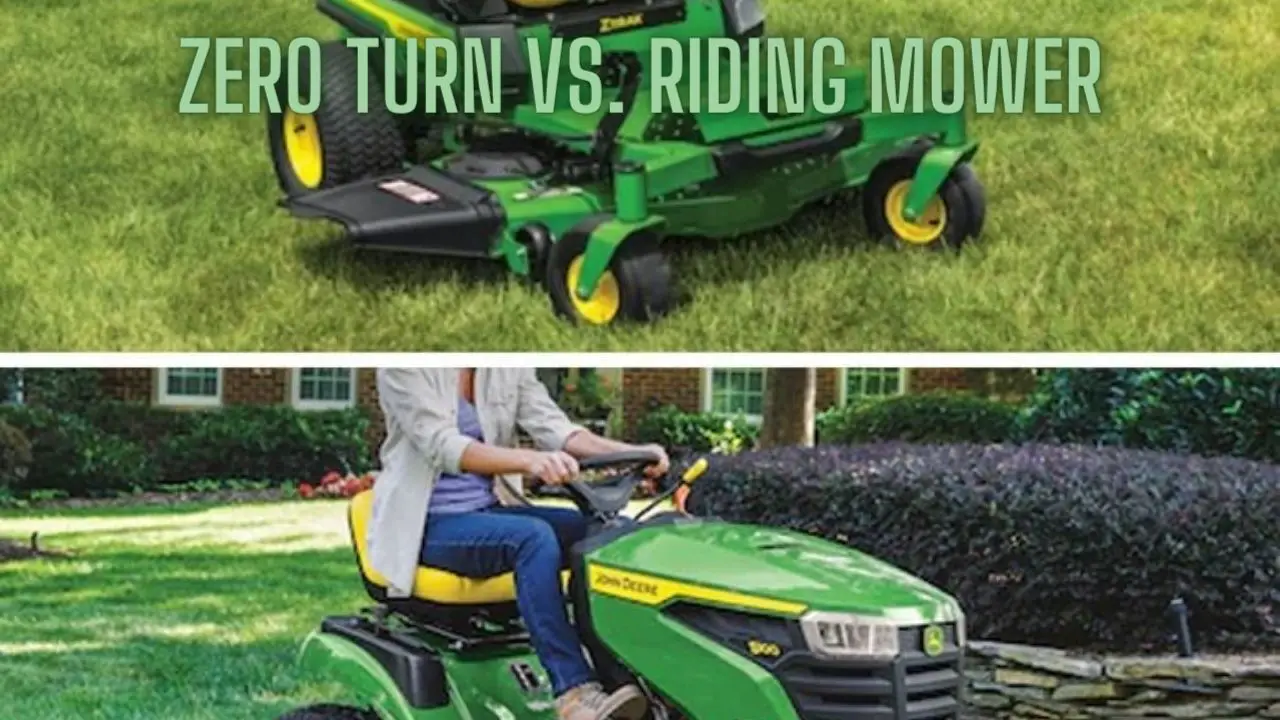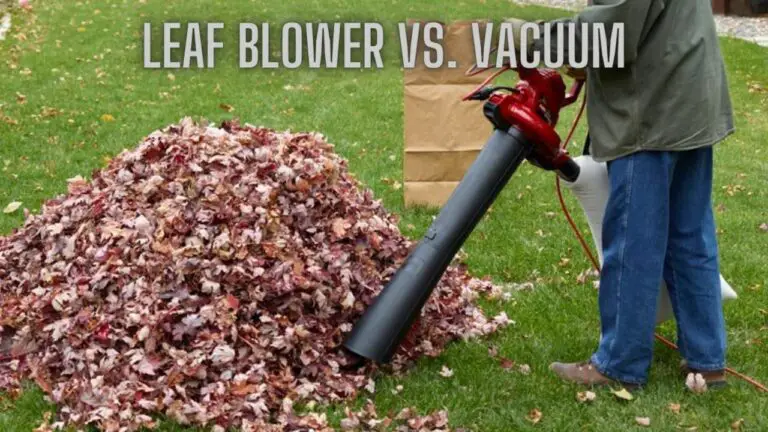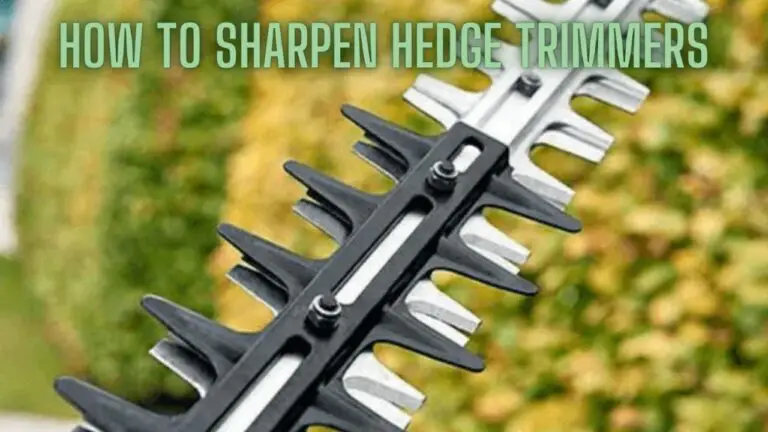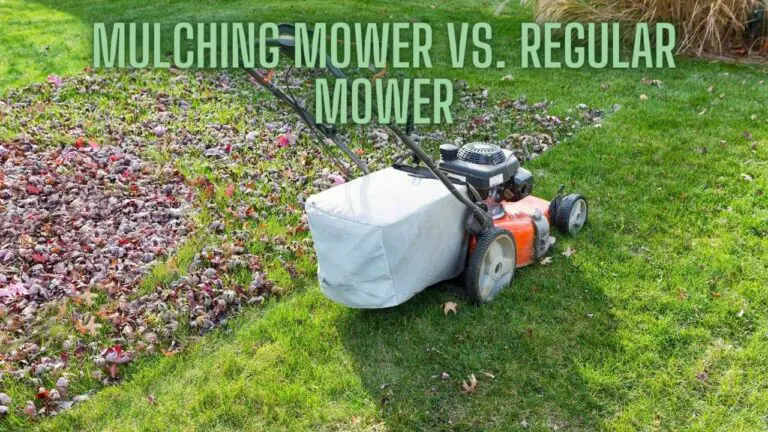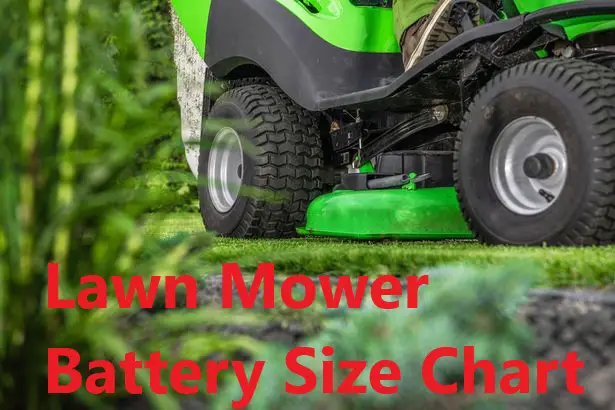Zero Turn vs. Riding Mower: Choosing the Right Lawn Machine for You
1. Introduction
Maintaining a well-manicured lawn requires the right tools, and when it comes to mowing large areas, the choice between a zero-turn mower and a traditional riding mower becomes crucial. Both types of machines have their advantages and limitations, and selecting the one that suits your needs depends on various factors such as lawn size, terrain, and personal preferences. In this comprehensive guide, we’ll delve into the key differences between zero-turn mowers and riding mowers, exploring their features, benefits, and considerations to help you make an informed decision for your lawn care needs.
1.1 Definition of Zero-Turn Mower
A zero-turn mower is a type of riding mower that is known for its ability to turn on a dime, thanks to its independent wheel motors. This design allows the mower to pivot 180 degrees without leaving any uncut grass behind. Zero-turn mowers typically feature two handles for steering, offering precise control over the direction of the machine.
1.2 Definition of Riding Mower
A riding mower, often referred to as a garden tractor, is a lawn mower with a seat for the operator and four wheels for mobility. It is designed for larger lawns and offers a comfortable and efficient way to mow grass. Riding mowers come in various styles, including lawn tractors and garden tractors, and they usually have a steering wheel for control.
1.3 Importance of Choosing the Right Lawn Mower
Choosing the right lawn mower is essential for maintaining a healthy and visually appealing lawn. The size of your lawn, the terrain, and your personal preferences all play a role in determining the most suitable mower for your needs. Understanding the differences between zero-turn mowers and riding mowers is the first step in making an informed decision.
2. Zero-Turn Mower Overview
2.1 How Zero-Turn Mowers Work
Zero-turn mowers operate on a system where each wheel has its own independent motor. This allows the mower to rotate around its own axis, providing exceptional maneuverability. The steering is controlled by two handles that can be moved independently to navigate the mower in any direction.
2.2 Maneuverability and Speed
One of the standout features of zero-turn mowers is their exceptional maneuverability. With the ability to turn 180 degrees without a radius, zero-turn mowers excel in navigating around obstacles and getting into tight spaces. Additionally, they are known for their speed, making them efficient for covering large areas quickly.
2.3 Ideal Lawn Size for Zero-Turn Mowers
Zero-turn mowers are ideal for larger lawns, typically ranging from half an acre to several acres. They are particularly well-suited for flat and open terrain where their maneuverability can be fully utilized. However, their efficiency can also be appreciated in lawns with intricate landscaping and obstacles.
2.4 Pros and Cons of Zero-Turn Mowers
2.4.1 Pros:
- Exceptional Maneuverability: Zero-turn mowers can turn on a dime, making them highly maneuverable and efficient.
- Fast Operation: These mowers are known for their speed, allowing users to mow large areas quickly.
- Precise Trimming: The ability to pivot and navigate around obstacles results in precise trimming, leaving fewer uncut areas.
2.4.2 Cons:
- Learning Curve: Using the dual-handle steering system may have a learning curve for some operators.
- Cost: Zero-turn mowers can be more expensive than traditional riding mowers.
- Limited Slope Capability: While they handle flat terrain well, zero-turn mowers may struggle on slopes.
3. Riding Mower Overview
3.1 How Riding Mowers Work
Riding mowers, including both lawn tractors and garden tractors, have a traditional steering wheel for control. They are powered by a single engine that drives the mower’s cutting blades and provides propulsion. Riding mowers are versatile and come in various sizes to accommodate different lawn sizes and terrains.
3.2 Maneuverability and Speed
While not as nimble as zero-turn mowers, riding mowers offer decent maneuverability, especially in larger spaces. The steering wheel allows for smooth control, and the mowers can navigate around obstacles effectively. However, they are generally slower than zero-turn mowers.
3.3 Ideal Lawn Size for Riding Mowers
Riding mowers are suitable for a wide range of lawn sizes, from small to large. They are particularly well-suited for lawns with moderate slopes and obstacles. The versatility of riding mowers makes them a popular choice for residential users with varying lawn sizes.
3.4 Pros and Cons of Riding Mowers
3.4.1 Pros:
- Versatility: Riding mowers are versatile and suitable for lawns of various sizes and terrains.
- Familiar Steering: The use of a steering wheel makes riding mowers more familiar and accessible for operators.
- Cost-Effective: Compared to zero-turn mowers, riding mowers are often more budget-friendly.
3.4.2 Cons:
- Limited Maneuverability: Riding mowers are not as maneuverable as zero-turn mowers, especially in tight spaces.
- Slower Operation: They tend to operate at a slower speed compared to zero-turn mowers.
- May Miss Spots: The turning radius may result in missed spots, particularly around obstacles.
4. Head-to-Head Comparison
4.1 Cutting Width
- Zero-Turn Mower: Zero-turn mowers typically have a wider cutting deck, ranging from 42 inches to 72 inches. This allows them to cover more ground with each pass.
- Riding Mower: Riding mowers come with varying cutting widths, typically ranging from 30 inches to 54 inches. While some models have a wide cutting deck, they generally have a narrower range than zero-turn mowers.
4.2 Maneuverability
- Zero-Turn Mower: Unmatched in maneuverability, zero-turn mowers can navigate around obstacles with precision. They excel in tight spaces and provide efficient trimming around landscaping.
- Riding Mower: Riding mowers offer decent maneuverability, especially in larger spaces. The steering wheel provides a familiar and controlled feel, but they may struggle in tight or intricate areas.
4.3 Speed and Efficiency
- Zero-Turn Mower: Known for their speed, zero-turn mowers are highly efficient for covering large areas quickly. The ability to turn without a radius enhances their overall efficiency.
- Riding Mower: While riding mowers are efficient, they generally operate at a slower speed than zero-turn mowers. This may result in a longer mowing time for larger lawns.
4.4 Comfort and Ergonomics
- Zero-Turn Mower: Zero-turn mowers often come with ergonomic features such as high-back seats, armrests, and vibration dampeners. The dual-handle steering system provides a comfortable and intuitive feel for operators.
- Riding Mower: Riding mowers are designed for comfort, featuring padded seats, ergonomic steering wheels, and sometimes even cruise control. The seated position reduces operator fatigue during extended use.
4.5 Terrain Adaptability
- Zero-Turn Mower: Ideal for flat and open terrain, zero-turn mowers may struggle on slopes. Some models have improved slope capabilities, but they are generally not designed for hilly landscapes.
- Riding Mower: Riding mowers are more versatile when it comes to adapting to different terrains. They handle moderate slopes well and are a better choice for lawns with varying elevations.
4.6 Maintenance Requirements
- Zero-Turn Mower: The maintenance requirements for zero-turn mowers are similar to riding mowers. Regular tasks include oil changes, blade sharpening, air filter replacement, and tire care.
- Riding Mower: Routine maintenance tasks for riding mowers include oil changes, blade maintenance, air filter replacement, and tire care. The simplicity of the steering system may make certain maintenance tasks more accessible.
5. Choosing the Right Mower for You
5.1 Lawn Size and Topography
- Small to Medium Lawns: For small to medium-sized lawns with open spaces and few obstacles, a riding mower may be sufficient.
- Medium to Large Lawns: Zero-turn mowers are ideal for medium to large lawns with flat terrain. Their speed and maneuverability make them efficient for covering extensive areas quickly.
- Lawns with Slopes: If your lawn has slopes or uneven terrain, a riding mower with good slope capability may be more suitable.
5.2 Budget Considerations
- Zero-Turn Mowers: Generally, zero-turn mowers are more expensive than riding mowers. If budget is a significant consideration, a riding mower may be a more cost-effective choice.
- Riding Mowers: Riding mowers come in a range of prices, making them more accessible for those with budget constraints. However, high-end models with advanced features can still be relatively expensive.
5.3 Operator Experience
- Zero-Turn Mowers: Operators who are comfortable with a dual-handle steering system and desire maximum maneuverability may prefer zero-turn mowers.
- Riding Mowers: If you prefer the familiarity of a steering wheel and want a more straightforward control system, a riding mower may be the better choice.
5.4 Desired Features
- Zero-Turn Mowers: If speed, efficiency, and precise trimming are top priorities, a zero-turn mower with a wide cutting deck may be the best fit.
- Riding Mowers: If versatility, comfort, and adaptability to varying terrains are important, a riding mower with a steering wheel provides a reliable option.
6. Tips for Lawn Mower Maintenance
6.1 Regular Cleaning
- Remove Debris: After each use, remove grass clippings, dirt, and debris from the mower deck and undercarriage.
6.2 Blade Maintenance
- Sharpen Blades: Keep the mower blades sharp for clean and efficient cutting. Sharpen them regularly or as needed.
6.3 Oil Changes
- Regular Oil Changes: Follow the manufacturer’s recommendations for oil changes to ensure the engine runs smoothly.
6.4 Air Filter Replacement
- Replace Air Filter: Replace the air filter according to the manufacturer’s guidelines to maintain optimal engine performance.
6.5 Tire Care
- Check Tire Pressure: Regularly check and maintain the proper tire pressure for even and efficient mowing.
FAQS
1. What is the main difference between a zero-turn mower and a riding mower?
- Answer: The main difference lies in maneuverability. Zero-turn mowers can turn on the spot with zero turning radius, thanks to their independent wheel motors, while riding mowers operate with a steering wheel and have a larger turning radius.
2. Which is better for large lawns, a zero-turn mower, or a riding mower?
- Answer: For large, flat lawns, a zero-turn mower is generally better due to its speed and ability to maneuver around obstacles efficiently. Riding mowers are suitable for a range of lawn sizes but may take more time on larger lawns.
3. Do zero-turn mowers work well on sloped terrain?
- Answer: Zero-turn mowers are designed for flat terrain and may struggle on slopes. Some models have improved slope capabilities, but for hilly landscapes, a riding mower with good slope adaptability may be more suitable.
4. Are riding mowers more affordable than zero-turn mowers?
- Answer: Generally, riding mowers are more budget-friendly than zero-turn mowers. Zero-turn mowers often come with a higher price tag due to their advanced maneuverability features.
5. Which mower type is easier for beginners to operate?
- Answer: Riding mowers with a steering wheel are often considered more user-friendly for beginners. Zero-turn mowers, with their dual-handle steering system, may have a learning curve.
6. Can zero-turn mowers cut grass near obstacles more effectively?
- Answer: Yes, zero-turn mowers are known for their ability to navigate around obstacles with precision. They can pivot 180 degrees without leaving uncut grass, making them efficient in tight spaces.
7. Are zero-turn mowers faster than riding mowers?
- Answer: Yes, zero-turn mowers are generally faster than riding mowers. Their speed and efficiency make them ideal for covering large areas quickly.
8. Do riding mowers have better adaptability to different terrains?
- Answer: Yes, riding mowers are more versatile in adapting to various terrains, including lawns with moderate slopes. They provide a comfortable and reliable option for lawns with diverse topography.
9. Can I use a zero-turn mower for precise trimming around landscaping?
- Answer: Yes, zero-turn mowers are excellent for precise trimming around landscaping features. Their ability to turn sharply allows for efficient trimming near flower beds, trees, and other obstacles.
10. Which type of mower requires less maintenance?
- Answer: Both zero-turn mowers and riding mowers have similar maintenance requirements. Regular tasks include oil changes, blade sharpening, air filter replacement, and tire care.
11. Do zero-turn mowers provide a more comfortable seating position?
- Answer: Zero-turn mowers often come with ergonomic features such as high-back seats and armrests, providing a comfortable seating position. Riding mowers also offer comfort features, including padded seats and sometimes even cruise control.
12. Can I use a riding mower for precision mowing?
- Answer: While riding mowers offer decent precision, especially with a smaller turning radius, they may not match the precise trimming capabilities of zero-turn mowers in tight spaces.
13. Are there any safety considerations specific to zero-turn mowers?
- Answer: Operators should be cautious with the dual-handle steering system of zero-turn mowers, especially during the learning phase. Additionally, their speed requires careful attention to obstacles and landscape features.
14. Can I use a riding mower on a flat lawn with no obstacles?
- Answer: Yes, riding mowers are suitable for flat lawns with no obstacles. They provide a comfortable and efficient mowing experience in such conditions.
15. Can I use attachments like snow blowers or baggers on both types of mowers?
- Answer: Yes, both zero-turn mowers and riding mowers often come with compatible attachments for various tasks, including snow removal, bagging, and more. Ensure that the attachments are suitable for your specific mower model.
7. Conclusion
Choosing between a zero-turn mower and a riding mower depends on various factors, including lawn size, terrain, budget, and personal preference. Both types of mowers have their distinct advantages and considerations, and understanding their differences is crucial for making the right decision. Whether you prioritize speed, maneuverability, or versatility, the choice between a zero-turn mower and a riding mower ultimately comes down to what suits your specific lawn care needs.
By assessing your lawn size, considering the topography, and weighing the features that matter most to you, you can make an informed decision that enhances the efficiency and enjoyment of your lawn care routine. Regular maintenance, regardless of the mower type, ensures that your chosen machine performs optimally and keeps your lawn looking its best. Whether you opt for the swift agility of a zero-turn mower or the versatile comfort of a riding mower, the key is to select the mower that aligns with your unique preferences and lawn care requirements.

